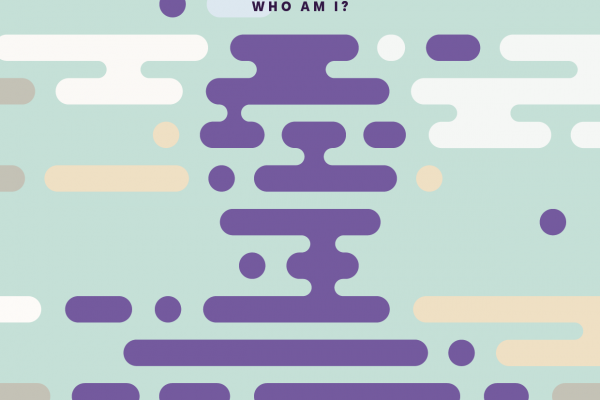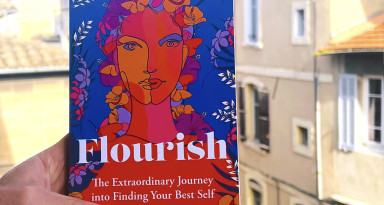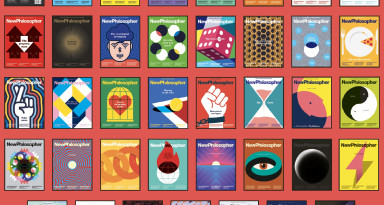Times are changing fast enough that it’s hard to know where to start unspooling the question of modern identity. Questions to answer are breeding on the way to that question. But then one evening, as is typical when our filters tune to particular riddles, a colleague across a table from me tossed the end of the topic’s thread. This colleague – we’ll call him Dmitri – explained over a drink that he’d been up late the night before as he spent all his spare time living a second life in an online multiplayer role-playing game. He lived that parallel life as an avatar identity, one who owned a cache of military-grade virtual weapons – bought for real cash – as well as a tugboat in which he went fishing. But it wasn’t all plain sailing. A cloud passed over his brow as he told me there were growing tensions between his real and his virtual lives. Specifically, he said he’d been wooing a sweet-looking avatar in the world where his tugboat was docked, and just as the moment arrived to seal the relationship and purchase a virtual phallus – also for cash and with multiple expensive luxury options – he suspected his real-life partner had broken into that world to hunt him down.
I could only blink and frown. Try to fathom the scale of the complication. Dmitri took that menace very seriously: both his lives had value to him, he was emotionally and materially invested in both, and while one carried the weight and duty of physical transaction, the other was a wonderland where minority impulse could roam. Still, as he spoke it became clear that a relationship with an avatar is still a relationship with a personality and, as such, a human identity; simple in some ways and complicated in others. And psychology aside, we can see philosophical layers falling like petals from his position, cleaving into questions and leaving something fresh behind, perhaps the bud of a wider identity than we’ve been allowed to explore up to now; since we might ordinarily incline to refer to Dmitri’s virtual life as a separate identity, but hearing him speak it seemed clear that this was still his proprietary identity merely expressing a child-like core: unpolished, heroic, and limitless.
The questions being asked by this are at the heart of our topic. We’re first asked if our physical constitutions are our whole identity, coming as they do with the range of cookie-cutter expectations that are currently being challenged. And if not, we’re asked to back one of two positions: either Dmitri’s identity by definition must permit and contain all his manifestations including overflowing into fantasy selves; or else we’re a multiple-identity creature without an indivisible self, a creature whose identity as a daughter does not go on to play a mother, whose enemy does not then play a friend, whose captive can’t be a captor.
But virtual tugboats and military-grade weapons might make our quest seem frivolous. Let’s look closer to home, at unfolding global reality, as we keep the question in mind. Recall brave Syrian-American blogger Amina Abdallah Arraf al Omari: “Teargas was lobbed at us. I saw people vomiting from the gas as I covered my own mouth and nose and my eyes burned. I am sure I wasn’t the only one to note that, if this becomes standard practice, a niqab is a very practical thing to wear in future.” Reporting from the frontline of a ruthless crackdown by Syrian government forces in Damascus, Amina was not only a Muslim woman but openly gay. In her own words: “I’m the ultimate outsider. My views are heavily informed by being both a member of a small marginal minority as an Arab Muslim in America and as a part of a majority as a Sunni in Syria, and of course as a woman and as a sexual minority.”
But her strength on the frontlines belied a life of complication. Discovering at fifteen that she was gay had been a terrifying experience, even in the USA where she was then resident. She’d aimed to attend Agnes Scott College in Atlanta but had been troubled by the number of openly lesbian students. In the end she was twenty-six before she felt able to come out. At this point she returned to Syria where she taught English and lived a “calm life”.
It didn’t last long. The Syrian uprising led Amina’s classes to be cancelled, and the growing turmoil led her to chat groups and websites to share the emerging struggle. Among these was lesbian news site LezGetReal, run by Paula Brooks, a gay, hearing-impaired archaeology PhD. Amina and Paula found a connection beyond activism and were soon flirting privately. It was Paula who raised the alarm when Amina was later kidnapped. A site was set up that day called Free Amina Arraf which by the following night had attracted over ten thousand members. But what Amina didn’t know at the time was that Paula Brooks was in reality a fifty-eight-year-old retired, married, heterosexual male construction worker from Ohio. And what he didn’t know was that Amina Abdallah was a forty-year-old male American PhD student in Edinburgh, also heterosexual and married. By now both were being quoted in the world’s mainstream media over Amina’s disappearance. The LGBT community mobilised. The US State Department looked into the case.
Within a week of Amina’s supposed kidnap the images she had used as herself were proven to be of an unconnected Croatian woman, a stranger living in Britain. Amina and Paula Brooks were outed as ‘sockpuppets’ and their identities collapsed. Needless to say, a horde of well-meaning supporters felt betrayed, and we should step lightly and respectfully past that fallout to the place where the questions fell. For instance: how much of identity is also made of our will that it be so? Because the persons behind the hoaxes both maintained that their masquerades grew by themselves as a badge for genuine feelings and thoughts after their true biological identities were not taken seriously as platforms for argument.
The Washington Post wrote of the fallout to the Syrian blogger hoax: “[It] meant that, at least according to a chilling and narrow definition of what it means to be real on the internet, [the blogger] was very good indeed at being Amina.” Of course, on their most significant level we still hold these identities to be fictions. But one of the runaway trains of our time, central to all our questions, is the pace at which the border between reality and imagination is crumbling both ways. Life is increasingly being managed from the outside looking in, and we’re ever more aware that every identity is manufactured to some degree. And this being true, in an age where we demand to identify ourselves beyond biological expectations, there must be a sense in which the blogger’s only hoax was not being in Syria.
If it all feels hypothetical, note we also now enjoy real-world protection for online fictions. Recall the forty-three-year-old Japanese piano teacher who lived a parallel life in the popular Korean role-playing world of MapleStory. Once married to an avatar there, she was so distraught when he suddenly divorced her that she murdered his avatar, by hacking in and erasing his online identity, and was taken to jail a thousand kilometres away in the city where he lived – despite having never met him. MapleStory has almost two hundred million registered users. There are hundreds more online multiplayer role-playing games besides, with countless more on the way.
Are these not a new whiteboard of identity? I say this must be their century. Where once we decided how to package and marshal our personal forces according to choices agreed by others, we have now let those forces run free. And if it sounds like a nihilistic nightmare, look again and watch the petals of our questions fly back to their flower: since we remain human, which must shape the majority of identity. As much as we sail on virtual tugboats we sail there with fears and hopes and downright drags of existence, as bipedal dreamers with opposable thumbs, often more able to remember old songs than to know why we just came into the kitchen. And living under humanity has given us over time a keen innate sense of the identities of others. Deception is nothing new. We already attribute insecurity to the boastful, vulnerability to the shy, we can read human codes backwards and forwards and upside down, and we do it without even thinking.
A manufactured identity, even a complete fiction, is a code for the intelligence that designed it. We can decode that intelligence through its fiction – and it knows it.
When I saw Dmitri again, the worst had happened: his partner in real life had accessed his virtual account. Game over. He still had his tugboat and his military-grade virtual weapons. I think he still had his luxury phallus.
But his real-life partner had turned his avatar into a cat.
And he, I, and you can decode that just fine.





